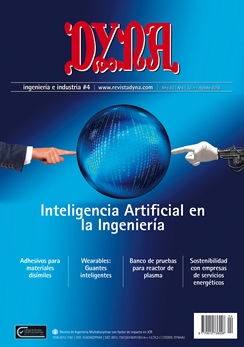FINITE ELEMENT EVALUATION FOR ADHESIVE JOINTS DISSIMILAR MATERIAL (STEEL – ALUMINUM)
Keywords:
Adhesivo, simulación por elemento finito, distribución de esfuerzos, microscopía electrónica de barrido, extensometría, Adhesive, finite element simulation, stress distribution, scanning electron microscopy, foil strain gaugeAbstract
In the automotive industry the demand for the reduction of CO2 emissions and environmental issues has generated regulations such as the CAFE (Corporate Average Fuel Economy). One critical point to be addressed is the weight reduction, this can be achieved by the substrate combination that can provide light weight, strength and stiffness. Adhesive bonding, is a technology in which one of its advantages is that it can join dissimilar materials. However, for the safe operation of bonded components, it is necessary to know their mechanical behavior in order to establish suitable operating parameters. The present manuscript presents a finite element analysis for dissimilar metal (aluminum-steel) adhesive bonded joints with different adhesives (methyl methacrylate, one and two component epoxy) and different thicknesses (3.9 and 2.9 mm). The substrates and adhesives were characterized to obtain a positive identification of the material and to feed the ABAQUS® software employed in the finite element analysis. In order to validate the model, lap shear tests were performed on samples bonded with the adhesives mentioned before. To verify the amount plastic strain, strain gauges were used bonded near the overlap area. Finally, post-fracture analyzes were used to analyze the type of failure. The results, provide information related to the mechanical behavior and stress distribution of the joints. It was revealed, that the strength of the joint depends on the type of adhesive and that the shear strength is not affected by the ductility of the adhesive. Additionally, the average normal stresses are greater in the edges of the adhesive joint and are responsible for the generation of the crack as could be verified in the post-fracture analysis. Finally, extensometer analysis suggested that higher stress was concentrated in the aluminum adherend without surpassing the yield stress. Key words: Adhesive, finite element simulation, stress distribution, scanning electron microscopy, foil strain gaugeDownloads
Published
2018-07-01
Issue
Section
ARTICULOS

